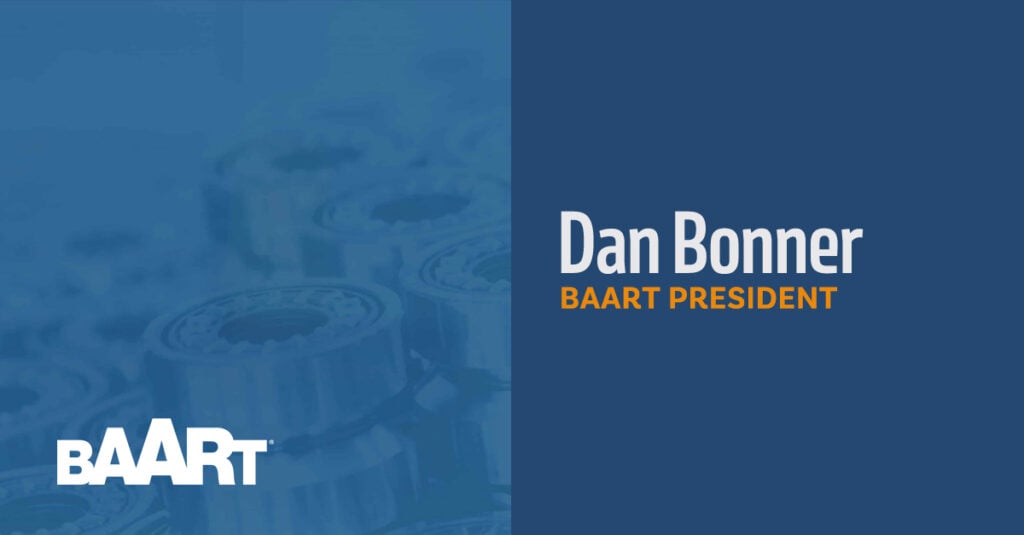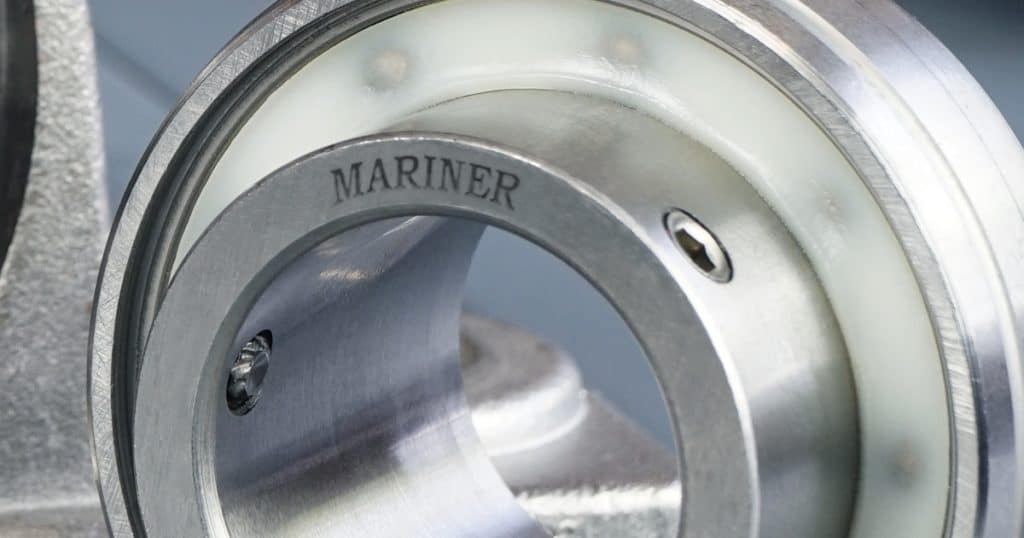Mounted Bearing Locking Collar: Which Is Best?

Wondering which mounted bearing locking collar is right for you? There are a lot of options on the market, each with its pros and cons. When you’re evaluating your needs and selecting a bearing, it can be tempting to go with a cheap option or one that is widely available, but is that always wise?
The locking mechanism you choose can be crucial to proper bearing function. Not every locking mechanism is right for every application. The wrong choice can lead to performance issues. There is the possibility of having your shafting damaged, which, if left unchecked, can lead to outright bearing failure. Avoiding a costly shut down is always important. So let’s take a look at some factors to consider.
Understanding the benefits and drawbacks of each mounted bearing locking collar will help you select the best option for your application. Each drive is different. There are bi-directional drives, uni-directional drives, fast ones, slow ones; the list goes on. The question is, will paying more make a difference for your drive?

Setscrew Shaft Lock
Setscrew locking mechanisms are the most common on the market. They are easy to come by, comparatively inexpensive, and the most simple to install. They were designed to be very basic, making them the entry-level locking mechanism. Not all drives operate at high speeds or experience shock or vibration. Sometimes uncomplicated works.
If you’re working with a bi-directional drive – and cost is a concern – you can get away with a setscrew shaft lock for your mounted bearings. We recommend that you only run these bearings at low to medium speeds, as this locking style has the smallest shaft contact area.
Turner mounted bearing setscrews are set 120° degrees apart. This degree of separation provides the most balance to the shaft within the bearing. Some manufacturers employ 65° or 90° separation. The low-speed rating comes from the fact that setscrews will always force shafting to one side of the inner race, creating an imbalance, however slight it may be. This is only problematic when shafting is undersized, or the drive operates at high speeds. High-speed applications require the shaft to be within the exact center of the bearing for the best balance and accurate rotation.
The biggest issue with a setscrew locking mechanism is its tendency to back off of the shaft. If or when this occurs, it can seriously damage the shaft. Heavy shock and vibration will hasten this, but if setscrews do not get appropriately torqued, or you don’t apply the anaerobic compound, the likelihood increases. Dimpling or filing a flat in the shaft where the setscrews make contact will help with holding power and set screw retention.
Eccentric Collar Shaft Lock
The eccentric collar locking style is a big jump in shaft engagement when compared to the setscrew. Still relatively inexpensive and easy to install, it is more reliable in a variety of applications. Eccentric collars are counterbored to engage with the bearing’s inner ring. They use positive binding, which means over time, the hold becomes stronger. Since eccentric collars don’t loosen, the shaft is safe from scarring caused by loose screws.
While the eccentric collar does have a larger contact area, like the setscrew, it forces the shaft to one side of the inner race. High speeds still aren’t ideal. But eccentric collars are problem solvers for specific areas in power transmission. The collar, if used correctly, will never loosen. There is the potential for significantly less shaft damage as well, allowing the shaft to last through multiple bearing lives.
One reason to avoid using an eccentric collar shaft lock is that it can only function in uni-directional drives. The lock essentially screws onto the shaft, so turning it the other way is always going to loosen it. If your mounted bearings are within a bi-directional drive, this isn’t the choice for you.
Concentric collar shaft lock
The concentric collar is the first high-speed applicable locking style. The collar goes all the way around the outside of the mounted bearing’s inner, segmented, ring. As the collar clamps down, it provides an even distribution of force to all 360° of the shaft.
Concentric collar shaft locks do an excellent job keeping everything balanced within the center of the bearing. Because this locking style does not force the shaft out of the center like setscrews or an eccentric collar, this shaft lock can see use in higher speed drives.
This particular locking style is no more forgiving when it comes to shaft tolerances, unfortunately. Because of the segmented inner race and the way it engages the shaft, undersized shafting will only make contact with the edge of the inner ring. This leaves the bearing unsupported under the raceways, where the shafting is not making contact. With true-to-size shafting, the likelihood of damage is significantly lower than the previously mentioned mechanisms.
Vertical shafts pose a problem for this particular bearing. The concentric collar has the lowest axial holding power of any locking style. Because of this, heavier vertical drives can cause the bearing to move on the shaft. The concentric collar is a problem solver but has weaknesses like all the other mechanisms. Never choose a bearing because it seems like the premium choice.
Adapter Sleeve Shaft Lock
The adapter sleeve shaft lock is the most comprehensive locking style on the market, though its applications are selective. The adapter sleeve is used most often in high-speed applications because it eliminates the shaft cocking that occurs in setscrew or eccentric collars. This shaft locking style excels at centering the shaft within the bore of the bearing.
This locking style takes the most time to install, involving multiple components and requires an exacting installation procedure. The adapter sleeve consists of a threaded and tapered sleeve, a locknut, and lockwasher. These parts work in concert to simultaneously pull the sleeve into the tapered bore of the bearing and clamp the sleeve to the shaft.
Proper tightening of the adapter sleeve is critical to ensure it will work properly. Under-tightening can cause the bearing to spin on the shaft. Over-tightening will preload the bearing, removing potentially all internal clearance. At an extreme, it can also crack the inner race of the bearing. There is little room for error.
Once installed, the shaft lock is centered within the bearing bore, allowing the application to see higher speeds while reducing the effects of vibration. The adapter sleeve has the largest contact area and the most considerable holding force. The large contact area prevents the adapter sleeve from damaging the shaft surface, and the tapered sleeve provides the highest margin for shaft tolerances.
One final note when considering the adapter sleeve: as the assembly is significantly larger than the other options we’ve discussed, it requires a larger bearing to accommodate this. Meaning, the bearing, housing, and center shaft height for any adapter sleeve bearing will be larger than any other shaft locking style with an equivalent shaft size.
Which Mounted Bearing Locking Collar is Right?
When it comes down to it, buying a shaft locking mechanism is a balancing act between cost and features. Like most things, if you have a drive that isn’t demanding on your power transmission components, you will be able to get by with a less comprehensive locking mechanism. Every shaft locking method has its use.
As the demands of the application increases – high speeds, vibration, worn or slightly out of spec shafting – solutions exist. If you have a very basic, run-of-the-mill application, setscrews will be appropriate. There is no need to use a locking style that exceeds the requirements of a drive.
As you move from setscrew to eccentric collar, to concentric collar, and finally the tapered adapter sleeve, you’re increasing the engagement with, and minimizing the potential damage to the shaft. Let the application dictate the required locking style.
Investing in the features best suited to your application will save you in the long run.
Take a look at the function of your drive and the forces working against it. Consider your budget, and get the mounted bearing locking collar that best fits the drive. It’s worth the peace of mind.




